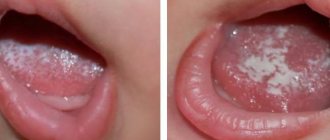A newborn's cold hands may worry parents. Doctors say that this process can be considered normal. The symptom is associated with the end of the formation of the autonomic system. Motor and sensory activity immediately after the baby is born is very different from that of an adult.
In infants, even in a warm room, the phalanges of the fingers can remain completely cold. It has been scientifically established that thermoregulation is completed only by 1.5 years. That is why mommy will have to use all means to warm the baby. To do this, you should wear warm clothes and use a blanket.
What affects the temperature of a baby's hands
Experts identify many reasons, including:
- reaction to ambient temperature;
- a well-fed or hungry child;
- what state is the autonomic nervous system in?
In the first weeks of life, the baby is not able to maintain and regulate body temperature.
Mothers should dress their child correctly if the room where he spends most of his time is not protected from drafts and the temperature in the room does not rise to the established norm.
Why do babies have cold hands and feet?
Even in the maternity hospital, young mothers often ask the doctor why the baby has cold hands or feet. Some doctors insist that newborns need to be wrapped in several diapers, and the temperature in the room must be maintained as high as possible. This is why in many maternity hospitals the wards are very hot and stuffy. In fact, you can't do that.
For your information. Modern pediatricians consider this attitude towards infants wrong. In most cases, cold extremities will not harm the child, but overheating can cause heatstroke.
How to tell if your baby is cold
Cold palms in young children may be due to immature thermoregulation. This is considered the norm, and you should not wrap your baby up in a warm room, otherwise the baby will sweat more and develop diaper rash .
If there is a decrease in the temperature of the palms, then the baby is really cold.
Parents should be aware of the methods for checking the condition, because if the hands are cold, this is not a direct indicator.
You need to take off your clothes and place the back of your hand on the baby's chest. At the same temperature there is no cause for concern.
In case of deviations, it is necessary to take measures to warm the baby: dress warmly and rub.
Loose clothing retains heat better than tight undershirts and rompers. It is also worth accepting the fact that up to a month the baby’s body cannot retain heat, so the temperature in the house should not be lower than +25⁰C.
How to help your child
If a mother notices cold and wet hands on her newborn, she must first find out the cause of this phenomenon. Your child needs help if:
- he looks lethargic and moves little;
- limbs became very cold after a long walk in winter;
- the child has an elevated temperature (above 37.5 degrees).
To prevent hypothermia, it is not recommended to go for a walk with your baby when the air temperature is below 10 degrees. If there is a strong wind outside, then you should not leave the house even at -5. A cold nose indicates hypothermia while walking. If your nose is frozen, it is better to return to the warmth.
Elimination of external negative factors
If you notice cold hands on a baby on the street, the baby is probably dressed too lightly. In this case, you should interrupt your walk and return to a warm room. Soon the baby's limbs will become warmer. In winter, be sure to put on mittens for your baby or hide your palms in the sleeves of your overalls.
Headdresses deserve special attention. In the summer, when going outside, you must put on your child a thin cotton cap (cap), otherwise the baby can easily overheat and get sunstroke. In autumn and early spring, they wear a woolen hat that fits tightly to the head, in winter - a fur headdress, and a cap underneath to prevent the head from sweating.
It is strictly forbidden to take the baby outside if he is sweating at home, because the temperature change can very easily make the child sick. First, you should wait until the skin becomes completely dry, and then you can get ready to go outside. You should also not go for a walk after bathing, so it is best to give your baby a bath in the evening before bed.
Prevention
To prevent thermoregulation disorders, it is necessary to dress the baby correctly, harden him and never wrap him up. You need to dress an infant for a walk in several layers, so that you can put on an extra layer or take off an extra one.
When to see a doctor
You should contact your pediatrician if:
- The baby often has a high body temperature, while the extremities are very cold;
- the baby constantly sweats, although it is not hot at home, and the child is dressed correctly;
- the baby grows poorly and does not gain weight.
The doctor will give recommendations and, if necessary, prescribe an examination. Timely consultation with a doctor will help prevent serious problems. The main thing is not to panic and not take any measures without consulting a pediatrician.
Parents should understand that the most dangerous thing for a child under one year old is not hypothermia, but overheating. You should never wrap your baby up, otherwise he will get even colder because he will sweat. When walking, a one-month-old baby wears the same number of layers of clothing as an adult, plus a blanket. In the warm season, the baby can be covered with a regular cotton diaper. If a child under six months old is cold or overheated outside, he needs to urgently return home.
Possible reasons
At this age, the child begins to learn to contact the outside world. It was found that the functioning of the body reaches normal only by three months, and its stabilization occurs by one and a half years.
Cold palms and nose after going outside are the norm. The same reaction is possible to a change in weather.
A decrease in hand temperature may also indicate that the baby is hungry.
Cold hands of a baby increase the baby's irritability and anxiety.
This condition is often accompanied by crying, and the child begins to actively move his arms and legs, which makes it possible to increase body temperature and warm up.
Among the main reasons that provoke cooling of the palms of a baby, doctors identify:
- formation of body thermoregulation;
- reducing the air temperature in the room where the newborn is located;
- lack of iron and vitamins in the body;
- dysfunction of the thyroid gland.
It is necessary to determine the reasons that caused this condition.
Hands and feet are freezing - we return to the adults
Nature, physiology and age are not always to blame for cold hands and feet in warm weather. This unpleasant phenomenon has its own reasons, which are often hidden in lifestyle or in one or another pathology.
Stomach - hunger, feet - cold
The normal functioning of the human body is associated with nutrition, or rather, with the supply from the external environment of various substances containing a certain set of proteins, fats, carbohydrates, microelements and vitamins, which, once in the digestive tract, are broken down, absorbed and give a person energy. The thermal and mechanical energy obtained as a result of splitting is spent on maintaining a constant body temperature and performing work, therefore, in order for this process not to stop and to proceed fully, regular replenishment of resources is necessary.
When going on a diet, a person expects that, by depriving his body of new supplies, he will force him to use what was previously accumulated. However, it is not as easy to extract from fat stores as it is from food. In addition, life support carried out through resynthesis cannot continue indefinitely; the reserves will someday run out. And then - not everyone’s fat accumulations are as large as it might seem in the mirror; the nutritional substrate in some (not very well-fed) people is depleted quite quickly, and the cells remain “hungry”, and they need nutrition constantly and continuously. The goal, in general, is achieved: the body loses weight, but at the same time it experiences not only lightness, but also cold. Tormenting themselves with diets, women begin to notice that their feet are cold, their fingers become cold - the body does not have time to produce heat to warm itself, and there is nothing left at all to be released into the external environment.
Although a voluntary transition to starvation diets in order to reduce one’s size cannot be classified as a disease, insufficient intake of necessary microelements and vitamins from food leads to some disturbances in the body, as evidenced by cold fingers and toes.
Complex of symptoms without a specific disease
Most often, hands and feet become cold in people who are considered practically healthy, but have such an interesting diagnosis as autonomic dysfunction (vegetative-vascular-neurocirculatory dystonia and many other names for this “semi-pathology”).
The autonomic nervous system (ANS) is designed to adapt the body to various environmental conditions, which, unfortunately, it does not always succeed. The adaptation process of the ANS is ensured with the help of its two departments, functioning in opposite directions. Inconsistency in the actions of the parasympathetic and sympathetic sections of the autonomic nervous system, the dominance of one part of the ANS over the other leads to the appearance of various non-fatal, but rather unpleasant symptoms, which include “icy” hands and cold feet. The reason that the heart may become ill, the pulse may increase, the head may become dizzy, and the hands may begin to freeze in such patients can be any, even minor, event (excitement, alcohol intake, poor diet, change in weather).
Iron deficiency
Always cold hands in patients whose body does not receive enough or for some reason does not include in the exchange of such a chemical element as iron (iron deficiency anemia, IDA). A low level of hemoglobin, the main content of iron and a carrier of oxygen to tissues, cannot go unnoticed and causes various kinds of disruptions in the functioning of organs and systems, where the thermoregulation system suffers along with others. Tissues, experiencing oxygen starvation, cannot fully carry out metabolic processes - fewer metabolic products and heat are produced. In addition to always cold hands, under conditions of hypoxia created by a decrease in hemoglobin levels, the body also suffers other inconveniences, for example:
- Nails become brittle, hair splits;
- The skin begins to peel, the tongue begins to hurt, and “jams” appear in the corners of the mouth;
- The head often hurts and feels dizzy, multi-colored “midges” fly before your eyes;
- Drowsiness, lethargy appears, mood drops;
- At times there is shortness of breath, tachycardia, heart pain;
- Immunity decreases.
The progression of IDA (deepening iron deficiency) comes with an increase in the symptoms of anemia, therefore, the lower the level of this element, the more cold the feet and hands become.
Why doesn't the blood warm up?
Numerous cardiac and vascular pathologies due to various reasons lead to disruption of microcirculation and spasm of capillary vessels. There is no doubt that vascular walls affected by atherosclerosis, slowing of blood flow in the main venous vessels, and various cardiac pathologies will sooner or later lead to impaired blood circulation in the microvasculature. Thus, the cause of cold hands and feet is, first of all, the patient’s vascular lesions:
- Raynaud's disease and syndrome. Spasm of small arterial vessels of the upper extremities, which occurs due to various circumstances, is manifested by a feeling of pain, chilliness, numbness in the fingers (usually). In advanced cases, Raynaud's phenomenon threatens to result in a violation of trophism and the development of shallow necrosis.
- Very cold hands can be noticed in patients with systemic lupus erythematosus (if Raynaud's syndrome is present).
- Atherosclerosis of the vessels of the lower extremities (feet are cold, feet have pain, cold numbness, poor tolerance to physical activity);
- Obliterating endarteritis (thromangiitis, Buerger's disease) is considered a disease of smokers, which begins with cold feet. Most often the feet and legs are affected, and the fingers are also affected. Clinical manifestations that are not very scary (according to the patient) at first (coldness, pain, numbness, convulsions) gradually turn into quite serious symptoms (ulcers, necrosis, angrene).
- In the initial stages of diabetes mellitus, there is spasm of capillary vessels and impaired blood circulation in the microcirculatory bed with the development of angiopathy. In the later stages of the disease, larger vessels are involved in the process, so cold hands and feet are a completely natural symptom for this disease. The legs of diabetics suffer more than the arms; severe forms often lead to damage to the foot (diabetic foot syndrome) and the development of gangrene, which in most cases ends in amputation of the limb.
atherosclerosis (a), venous stagnation (b), diabetes (b) are typical causes of poor blood supply to the extremities (primarily legs) - Among the numerous symptoms of cardiac decompensation and venous congestion in the systemic circulation are cold feet, icy hands, and blue fingers.
- Cold hands and feet in those who systematically poison the tissues of their own body with alcohol-containing products. Disruption of metabolic processes in tissues leads to the development of a disease such as alcoholic polyneuropathy, the cause of which is always the toxic effects of strong drinks.
Low hormone levels cool the extremities
The thermoregulation system also turns out to be sensitive to hormonal imbalance, namely to a decrease in the level of thyroid hormones (thyroxine, in particular).
Hypothyroidism, caused by functional deficiency of the gland or various pathological conditions (inflammatory processes, removal of the thyroid gland, radiation therapy, etc.) is accompanied by a slowdown in redox reactions in tissues, which, in turn, makes it difficult to provide cells with energy.
With a lack of thyroid hormones, along with a slowdown in the rate of metabolic processes, heat production and heat release decreases. The result is eternally cold hands and feet.
Cold hands are a signal of the development of the disease
Constantly cold palms can sometimes indicate the beginning of the development of a pathological process. In this case, you need to pay close attention to the child’s health. At the first suspicion of a disease, you should seek help from a specialist.
The following signs will indicate pathology:
- lack of appetite, refusal to eat;
- increased body temperature;
- increased tearfulness, anxiety;
- wet palms;
- skin rashes.
If these signs are absent, then there is no reason to worry.
If you suspect an illness, you should not wrap your baby up too much. This leads to disruptions in the thermoregulation process.
When to see a doctor
Seeing a doctor is necessary in the following cases:
- increase in body temperature above +38⁰C;
- pale skin;
- apathy, refusal to eat;
- your palms are wet, this is especially noticeable at night.
After examination, the pediatrician determines the reasons and prescribes treatment, if necessary.
How to improve blood circulation in a newborn
In order to bring the child’s thermoregulation back to normal in a short time, it is recommended to perform certain procedures. Experts place massage first.
It is necessary to massage not only the torso, but also the legs and arms, and do not ignore the feet.
As a result of the procedures, the child:
- metabolic processes in the body are normalized;
- blood circulation improves;
- the muscular system is strengthened;
- general health returns to normal.
In addition to massage, you can do contrast baths.
Doctors advise that the child spend most of the time at home without clothes, taking air baths if the apartment is warm. This helps to activate the cardiovascular system and allows you to quickly adapt to environmental conditions.
Hardening is useful for a baby, but only if everything is done correctly.
Breastfeeding is of great importance to increase immunity and improve health. Mother's milk contains a large number of substances, minerals and vitamins necessary for the baby's health.
The baby's feet should be warm, for this you need to wear socks, and special mittens are put on your hands, which keep your palms cool and prevent the child from scratching himself, because. even in the first month of life he cannot control the movements of his hands.
If your palms become cold after swimming, rub them with a soft towel until they become slightly red.
Basic methods for improving blood circulation
The heat transfer process can be improved if simple procedures are performed regularly. Doctors recommend massage, which involves gently massaging the upper and lower extremities. Such manipulations will additionally calm the child, give him vigor and normalize his sleep and rest patterns.
Gymnastics also has a positive effect on the body. It should be carried out regularly, starting from the first days of life. The procedure must be additionally combined with a bath and the baby being naked. Thanks to these simple manipulations, it is possible to dilate the blood vessels. After a certain period, the baby will be able to fully adapt to external conditions and feel comfortable in them.
Massage helps improve thermoregulation process
Hardening has a positive effect on the body as a whole. That is why even at an older age it is recommended to alternate the water temperature. When introducing complementary foods, it is necessary to monitor its temperature. Completely cold food should not be used. Immediately after the baby is born, it is recommended to constantly wear special mittens for him. Additionally, they will protect your baby's skin from scratches. You should also wear thin socks on your feet at home. Clothing should not interfere with normal movements. The baby feels comfortable in things that fully correspond to weather conditions.
Parents should check the temperature of their hands after finishing water treatments. If they are cold, then you should gently rub the skin using a terry towel. If the symptom persists for a long time and is accompanied by moodiness and poor appetite, it is recommended to seek advice from a specialist in this field. He will prescribe the necessary tests, on the basis of which a diagnosis will be made.
General recommendations
To prevent hypothermia, experts recommend following the following rules:
- The child needs to move as much as possible. This improves blood circulation and increases sweating. At the same time, blood will actively flow to the hands and they will always be warm.
- A baby in a warm room often has cold hands - this is normal, because the body adapts to environmental conditions, so you should not wrap the baby up.
- It is important to monitor the baby's nutrition, especially if he is bottle-fed . Infant formulas must be nutritious and rich in vitamins and minerals so that the baby’s development is normal and there are no malfunctions in the functioning of organs and systems.
In the first months of life, it is necessary to monitor the child’s condition.
If the baby is cheerful, cheerful and nothing bothers him, then there is no reason to worry, because the body gets used to the environment and adapts to it. But if the hands become cold against the background of elevated body temperature, the baby often cries and sleeps poorly, then the help of a pediatrician is needed.
Methods for correct diagnosis
To find out the reason for the constant cooling of the extremities in a baby, you need to:
- compare the temperature of the baby’s hands and feet at home and on a walk;
- observe how the baby reacts to putting on an additional layer of clothing, whether the limbs become warmer;
- look at the general well-being of the baby;
- consult a pediatrician.
It is known that in a healthy child, the limbs become cold during sleep and become warm during massage and gymnastics, as well as during active movements, therefore modern warm overalls that do not restrict motor activity are preferable to tight swaddling. During sleep, you can additionally wrap the baby in one thin calico swaddle so that he does not flinch and sleep more peacefully.
In most cases, there is no need to see a doctor










